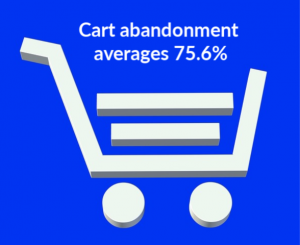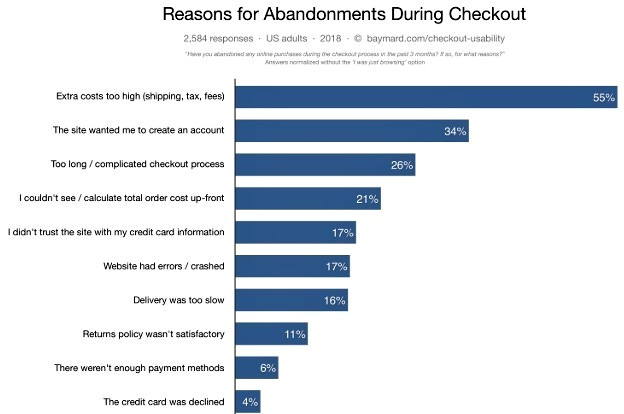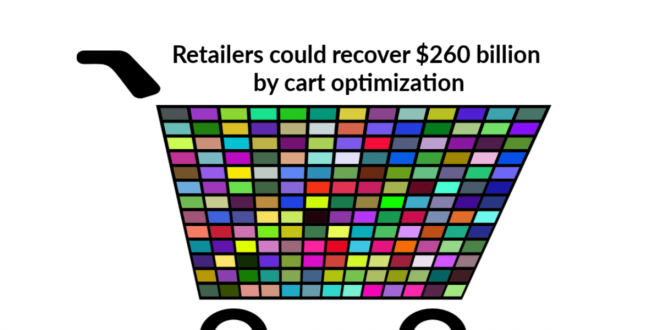Surf and turf window shopping costs UK retailers billions.

New research from Barclaycard shows that UK online shoppers abandon their shopping carts to the tune of £18 billion ($21.9 billion) annually.
This behavior is not unique to British consumers either as US and other online shoppers abandon tens of billions of dollar’s worth of products in their shopping carts every year too.
This online window shopping or what the Brits call “surfing and turfing” is a pain in the pocketbook for retailers. Let’s look at the scale of the problem.
How big is the cart abandonment problem?

Consumer cart abandonment stats are stunning. The average global cart abandonment rate is 75.6% but those rates can be even higher in industries such as financial (83.6%), nonprofit (83.1%), and travel (81.7%). Other industries are lower including retail (72.8%), fashion (68.3%), and gaming (62.8%) according to data from Smart Insights.
Depending on the device used shoppers are more inclined to abandon carts on mobile (85.65%) and tablets (80.4%) compared to a desktop computer (73%). Is it because of poor design and usability of mobile apps, the size of the screen, or other factors?
For some reason, checkout abandonment is highest between 8 PM and 10 PM, followed by 6 PM and 8 PM with nine out of 10 carts dropped on weekends, followed closely by Monday. December is understandably the month with the highest incidence of cart abandonment, followed by November and January. Can you spell holiday shopping stress?

And what are they abandoning? The most abandoned items online include knitwear, leather goods, lingerie, and headphones. “Brits are most likely to have abandoned women’s clothing (29%), men’s clothing (26%) and entertainment items (26%),” Barclaycard reports
40% of consumers put items into their basket either to try and ensure availability in inventory as part of the surf and turf syndrome or they are simply the 17% of online shoppers who are simply window shopping.
Younger consumers are the most fickle with the highest abandonment among millennials aged 24 to 34-years, followed closely by 18 to 24-year-olds. Women tend to abandon more (39%) than men (19%), with 42% of researchers saying men and women are equally responsible according to Barclaycard.
Why are consumers abandoning carts?
The top seven reasons for cart abandonment according to the Baymard Institute include: extra costs (such as shipping) too high (55%), forced account open or registration (34%), checkout is complicated or takes too long (26%), couldn’t calculate total costs upfront (21%), trust security on the site (17%), website errors or slow speed (17%), or delivery was too slow (16%).

Baymard says many of these issues are easily resolved or improved through better website and checkout process design. For example, it says the average US online checkout has 23.48 form fields versus the ideal average of 12-14.

“The average large-sized e-commerce site can gain a 35.26% increase in conversion rate though better checkout design. And that is despite testing the checkout flows of large e-commerce sites in the US and EU, such as Walmart, Amazon, Wayfair, Crate & Barrel, and ASOS,” Baymard reports.
Baymard says as much as $260 billion in lost revenue could be recovered just by improving online checkout optimization in the US and EU. That’s a lot of money on the table for online vendors and they need to figure out solutions to shopping cart abandonment before the situation gets worse.

